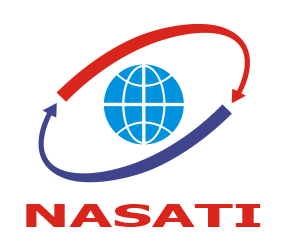LIÊN KẾT WEBSITE
New dihydrochromene and xanthone derivatives from Lisotrigona furva propolis
Fitoterapia Số , năm 2021 (Tập 149, trang -)
ISSN: 0367326X
ISSN: 0367326X
DOI: 10.1016/j.fitote.2020.104821
Tài liệu thuộc danh mục:
Article
English
Từ khóa: Animals; Anti-Infective Agents; Antineoplastic Agents; Bees; Cell Line, Tumor; Clusiaceae; Dipterocarpaceae; Humans; Mangifera; Molecular Structure; Phytochemicals; Propolis; Vietnam; Xanthones; 22 hydroxyhopanone; 3 isomangostin; 4 geranyl 1,3,5 trihydroxy 9h xanthen 9 one; 4 hydroxy 3 (3 methyl 2 butenyl)cinnamyl alcohol; 7 o demethyl mangostanin; 9 hydroxycalabaxanthone; alpha mangostin; antibiotic agent; antifungal agent; antiinfective agent; chromene derivative; cochinchinone A; cochinchinone G; cochinchinone I; cochinchinone J; cochinchinone K; cratoxylumxanthone B; cycloheximide; cytotoxic agent; delta tocotrienol; dihydrobrasixanthone B; dihydrochromene; dipterocarpol A; ellipticine; gamma mangostin; lisofurvin; mangiferolic acid; nystatin; ocotillone II; polypoda 7,13,17,21 tetraen 3beta ol; propolis; pruniflorone S; resin; sootepin F; streptomycin; unclassified drug; xanthone derivative; antiinfective agent; antineoplastic agent; phytochemical; propolis; xanthone derivative; antibacterial activity; antifungal activity; antimicrobial activity; antineoplastic activity; Article; Bacillus cereus; bacterial strain; biological activity; Candida albicans; carbon nuclear magnetic resonance; chemical composition; controlled study; Cratoxylum cochinchinense; Dipterocarpaceae; drug cytotoxicity; drug identification; drug isolation; Enterococcus faecalis; Escherichia coli; Hep-G2 cell line; human; human cell; IC50; KB cell line; Lisotrigona furva; mango; mass spectrometry; minimum inhibitory concentration; nonhuman; Pam LU-1 cell line; priority journal; proton nuclear magnetic resonance; Pseudomonas aeruginosa; Salmonella enterica; Staphylococcus aureus; stingless bee; structure activity relation; tree; animal; bee; chemical structure; chemistry; Clusiaceae; isolation and purification; Mangifera; tumor cell line; Viet Nam
Tóm tắt tiếng anh
A new dihydrochromene derivative, named lisofurvin (1) and a xanthone, named dihydrobrasixanthone B (2) together with twenty one known compounds (3−23) were isolated from propolis of the stingless bee Lisotrigona furva. Their chemical structures were determined by means of spectroscopic methods including 1D and 2D NMR, and MS. The chemical constituents are predominantly geranyl(oxy) xanthones and Cratoxylum cochinchinense was suggested as a resin source, besides two other plants Mangifera indica and dammar trees (Dipterocarpaceae). Compound 1 showed significant cytotoxic activity against KB, HepG-2, and Lu-1 cancer cell lines with IC50 values range from 12.63 to 15.17 μg/mL. Several isolated compounds were active against one to four tested cancer cell lines. In addition, among the isolated compounds, α-mangostin (15) displayed the strongest antimicrobial activity against three Gram (+) strains, P. aeruginosa, and C. albicans with MIC values ranging between 1 and 2 μg/mL. Compound 22 showed good activity against three Gram (+) strains and C. albicans. © 2020 Elsevier B.V.

